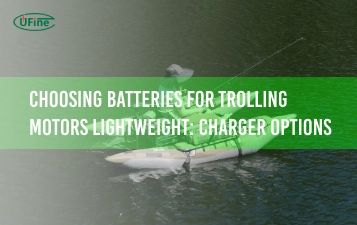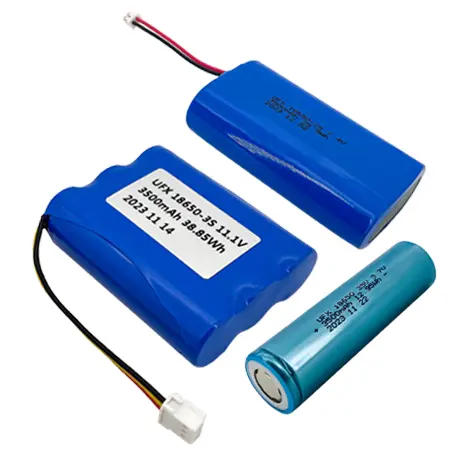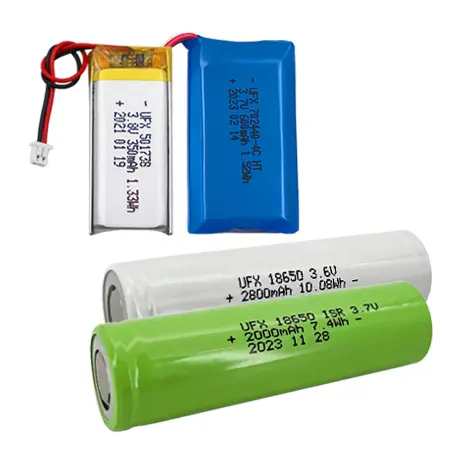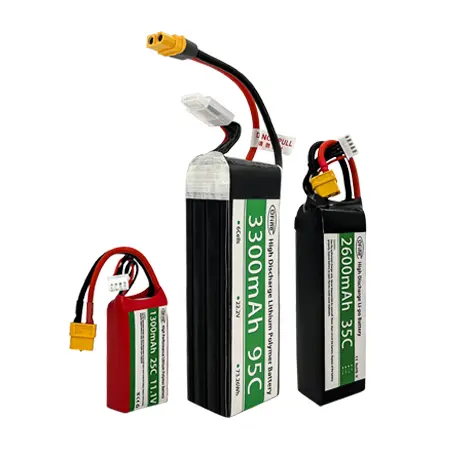Have you ever considered why your power tool battery dies when you need it most? Whether you are a DIY enthusiast or professional, this frustration is very familiar: the dying power tool battery, which comes at the worst possible moment.
But don’t worry; in this article, we look deeply into power tool batteries to find the differences that make or break your projects, covering everything from power and capacity to compatibility and cost.
So let’s get started.
Part 1. What are power tool batteries?
Power tool batteries provide the lifeblood for cordless tools, giving them the energy they need to complete their tasks without being physically tethered to an electrical outlet. Although the batteries have different shapes and sizes, they serve your tools by powering them.
Most power tool batteries are rechargeable. In general, the methods that most of them use for power storage and delivery are lithium-ion (Li-ion), nickel-cadmium (NiCd), or nickel-metal hydride (NiMH) technology.
These batteries have become essential for anybody dependent on the cordless tool for their work or hobbies to work from every situation without being limited by the cords. However, all power tool batteries are different, and understanding their differences is critical to maximizing your tool’s performance and efficiency.
Understanding the differences will be better done by first clearly understanding the different types of power tool batteries.
Part 2. Types of power tool batteries
Some of the most common types of power tool batteries that people use
1. Lithium-ion (Li-ion):
For many power tool customers, Li-ion batteries are the best selection because of a great combination of performance and longevity. This makes the battery exceptionally lightweight, and therefore, it reduces the feeling of fatigue even when the operation continues for a long time.
The high energy density of these batteries means that manufacturers can pack a lot of power into a small package, resulting in longer run times between charges.
One noticeable characteristic of Li-ion batteries is the low self-discharge rate, making them hold their charge for quite a long period when left unused. These are the best for users who use their tools in intervals or occasionally.
The advantages of Li-ion batteries over other types of batteries will feature higher costs initially but significantly higher performance, coupled with a longer service life for most serious users.
2. Nickel-Cadmium (NiCd):
NiCd batteries were, at one point, a vital part of the power tool world. Still, they have fallen from grace due to environmental issues and new battery technology. The batteries are tough, durable, and work better than others under harsh working and extreme temperatures.
On the other hand, NiCd batteries are influenced adversely by a so-called “memory effect,” whereby their capacity reduces over time because of partial discharging before recharging.
It may be unpleasant for users who rely on the performance of their tools. NiCd batteries are also heavier and bulkier than Li-ion batteries, making the user feel more tired after a more extended work period.
3. Nickel-Metal Hydride (NiMH):
NiMH batteries are more of a compromise between NiCd and Li-ion batteries. They have a better energy density than NiCd batteries. They are less prone to the memory effect, so they can consistently perform better over time.
Though more environmentally friendly than NiCd batteries, NiMH batteries still suffer from lower energy density and total lifespan than Li-ion batteries. This has led them to be used most frequently in lower-cost power tools or as a greener alternative to NiCd for those seeking environmental sustainability.
By understanding the strengths and limitations associated with each type of power tool battery, you can make an informed decision according to your specific needs and preferences.
Depending on whether you care more about performance, longevity, or environmental impact, there’s a battery type for you.
Let us now discuss in detail the difference between the power tool batteries.
Part 3. What is the difference between power tool batteries?
1. Electric Drills: Including drills and electric screwdrivers
Electric drills and screwdrivers are indispensable tools in any DIY enthusiast’s or professional’s toolkit. When powering these tools, the choice of battery type can significantly impact their performance and usability.
For tasks that demand high power output and prolonged use, such as drilling through rigid materials or driving screws into dense surfaces, lithium-ion (Li-ion) batteries are often the preferred choice.
So, a battery like the Ufine 18650 Li-ion Battery with a capacity of 3500mAh can be an excellent choice for electric drills, including drills and electric screwdrivers. This battery offers a high energy density, ensuring the tools operate efficiently for extended periods without needing constant recharging.
2. Electric Saws: Such as circular saws, jigsaws, and chainsaws
Electric saws, including circular jigsaws and chainsaws, require robust power sources to tackle various cutting tasks with precision and efficiency.
Lithium-ion batteries are well-suited for powering these tools due to their high energy density and long-lasting performance. Whether it’s cutting through lumber, plywood, or metal, electric saws equipped with Li-ion batteries can deliver consistent power output for extended periods, ensuring smooth and efficient operation.
So, a battery like the Ufine High-Temperature Battery Pack could be ideal. Its high energy density and long-lasting performance enable the saws to deliver consistent power even in high heat, which is crucial for smooth and efficient operation.
3. Electric Wrenches: Used for tightening screws and nuts
Electric wrenches play a crucial role in fastening screws and nuts in various applications, ranging from automotive repair to construction projects.
The choice of battery type can impact the efficiency and effectiveness of these tools. Lithium-ion batteries offer a compelling solution for tasks requiring reliable power and prolonged use.
Their high energy density and long run times ensure that electric wrenches can operate continuously without frequent interruptions for recharging.
So, a battery like the Ufine High Rate Discharge Battery can provide the necessary efficiency and effectiveness. Manufacturers design this battery to deliver high power output, essential for the demanding tasks that electric wrenches require.
4. Electric Blowers: Used for drying surfaces or clearing debris
Electric blowers are vital for maintaining clean and dry environments, whether for drying surfaces or clearing debris. They are instrumental in settings where quick and efficient cleaning is necessary.
A battery that can provide a consistent and robust energy supply is crucial for these power tools.
The Ufine Lithium Polymer Battery, known for its large capacity and compact design, is an excellent match for electric blowers. Its low self-discharge rate ensures the blower retains its charge even when unused, making it ready for action whenever needed.
5. Electric Mixers: Used for mixing liquids or powders
Electric mixers, commonly used for mixing liquids or powders, require a reliable and durable power source to handle the varying consistencies and viscosities they encounter.
A battery such as the Ufine High Rate Discharge Battery would be well-suited for this application, providing the necessary power to maintain consistent mixing speeds and prevent lag in performance.
Manufacturers design this type of battery to handle high-drain applications, ensuring that electric mixers can perform at their best, even under strenuous conditions.
Part 4. Final words
Choosing the correct power tool battery is crucial to achieving the best project results. The key to making the best choice is understanding the differences among lithium-ion, nickel-cadmium, and nickel-metal hydride batteries.
Please consider factors such as power, size, the duration it takes to recharge, compatibility, and cost. The thought behind these is that you get a battery that will boost the performance of your tools without breaking the bank.
Related Tags:
More Articles

Choosing Batteries for Trolling Motors Lightweight: Charger Options
Lithium batteries are best for trolling motors as they are lightweight long long-lasting, and efficient. This guide covers selection, charging, and care tips.
Finding 11.1 V LiPo Battery Near Me: B2B Supplier Strategies
Need 11.1V LiPo batteries near you? This guide helps B2B buyers source reliable suppliers, compare specs, and ensure safe, cost-effective deals.
11.1 V LiPo Battery 5000 mAh: Specs That Matter for Industrial Use
An 11.1V 5000mAh LiPo battery offers high capacity and stable power, ideal for drones, robotics, and industrial tools requiring long runtimes.
Lightweight Battery Packs for Trolling Motors: Top Features
Looking for the best lightweight trolling motor battery? This guide covers top features, battery types, and tips to boost your boating performance.
Safe Charging Protocols for Your 11.1V LiPo Battery Charger
Safely charge your 11.1V LiPo battery by following proper rates, using safety tools, and avoiding common charging mistakes.






